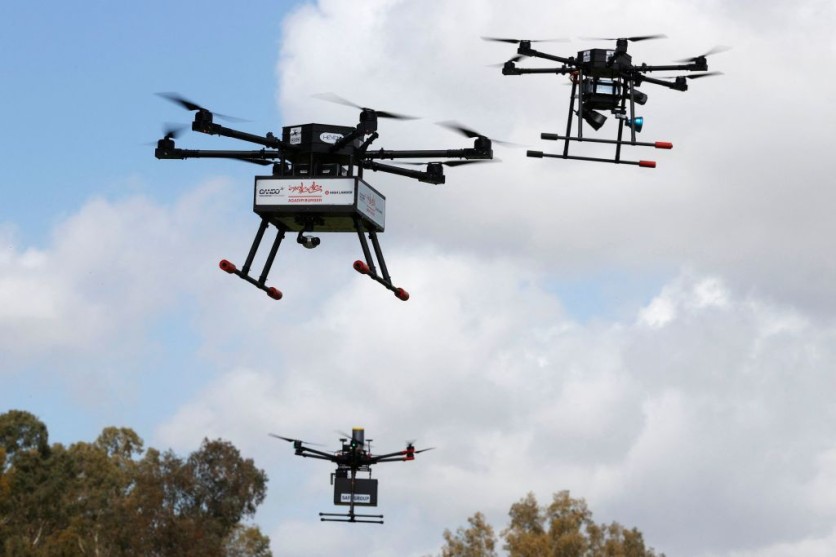As the prospect of autonomous drone traffic in uncontrolled airspace looms large, researchers are exploring AI-driven solutions to ensure safe and efficient operations.
Projections suggest that the US could see nearly one million commercial uncrewed aircraft systems (UAS) in operation by 2027, engaged in diverse tasks such as package delivery, traffic monitoring, and emergency response.

AI-Driven Drone Traffic Management
Led by Lanier Watkins and Louis Whitcomb from the Institute for Assured Autonomy, a team of researchers has embarked on a mission to model a system that could revolutionize drone traffic management.
Their approach involves integrating artificial intelligence to replace certain human-involved processes with autonomous decision-making capabilities.
Watkins, an associate research professor in the Department of Computer Science at the Whiting School of Engineering and a key figure at the Johns Hopkins Applied Physics Laboratory, highlighted the motivation behind their research, saying, "We wanted to see if different approaches using AI could handle the expected scale of these operations in a safe manner, and it did."
Their simulated system employs AI-driven algorithms to improve the safety and scalability of UAS operations within the altitude range of 400 feet. In response to the burgeoning challenge of escalating UAS traffic, the Hopkins team meticulously evaluated the impact of autonomous algorithms within a simulated 3D airspace.
Building on prior research indicating the efficacy of collision avoidance algorithms in reducing accidents, they introduced strategic deconfliction algorithms to further enhance safety and nearly eliminate airspace accidents.
Adding a touch of realism, the researchers equipped their simulator with "noisy sensors" to mimic the unpredictability of real-world conditions, enhancing adaptability.
Additionally, a "fuzzy interference system" was integrated to assess the risk level for each drone, considering factors such as proximity to obstacles and adherence to planned routes. These measures empower the system to autonomously make decisions aimed at preventing collisions.
Whitcomb, a professor of mechanical engineering at the Whiting School of Engineering and a researcher at the Institute for Assured Autonomy, expressed optimism about the outcomes, stating, "Our study considered a variety of variables, including scenarios that involve 'rogue drones' that deviated from their planned routes. The results are very promising."
Read Also : Zipline P2 Zip: New Machine for Precise Drone Delivery Debuts, to Bring Packages Better and Quieter
Looking Ahead
Looking ahead, the team plans to further refine their simulations by incorporating dynamic obstacles like weather conditions and other real-world factors, aiming for a more comprehensive representation.
Watkins emphasized that this research builds on over two decades of rigorous exploration conducted at the Johns Hopkins University Applied Physics Laboratory, all focused on bolstering the safety of the US National Airspace System.
"This work helps researchers understand how autonomy algorithms that protect airspace can behave when faced with noise and uncertainty in 3D-simulated airspace and underscores the need to continuously monitor the results from these autonomous algorithms to ensure they have not reached potential failure states," Watkins noted.
The findings of the team were published in IEEE Xplore.
Related Article : MIT Takes Strides Towards Greener AI: Addressing the Environmental Impact of Energy-Intensive Models





![Most Useful Google Chrome Keyboard Shortcuts You Need to Know to Improve Your Browsing Experience [2024]](https://d.techtimes.com/en/full/449047/most-useful-google-chrome-keyboard-shortcuts-you-need-know-improve-your-browsing-experience-2024.jpg?w=184&h=103&f=476d29fd60df70a67f6679f99a2ca6d0)